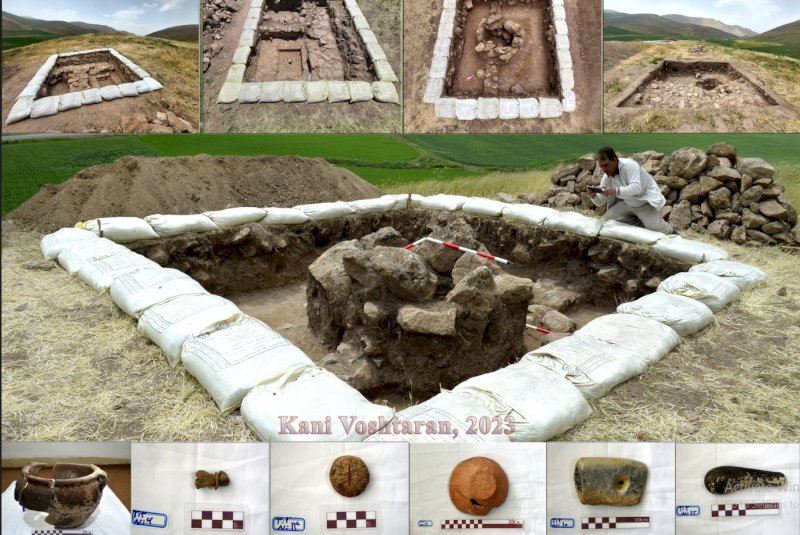Traces of prehistorical settlement revealed in northwest Iran

TEHRAN – An archaeological team has discovered traces of a prehistorical settlement, whose commencement is estimated to be somehow overlapped with the termination of the Iron Age.
The team is one of the five currently conducting rescue excavations on the basin of a newly constructed dam in Oshnavieh county, CHTN reported.
“A settlement with two distinct architectural phases, which probably dates back to the first millennium BC, has been discovered in a survey examining the lands near the Chaparabad Dam,” archaeologist Yousef Fallahian said on Monday.
Preliminary estimates show the beginning of the settlement can coincide with the end of the Iron Age, the archaeologist said.
Measuring 50 by 100 meters in area, the settlement is built on a natural ridge with a northeast-southwest expansion, Fallahian said.
He said the exposed architecture consisted of ruins made of small and large rubbles with mud mortar, which do not have much resistance and stability.
Referring to the discovered relics, he said the cultural materials discovered at the site included many pottery pieces and a handful of relatively flawless earthen vessels, all of which are simple, and a large number of them are observed to be brittle and rough, which is probably from local and non-mass production.
Moreover, the abundant use of stones indicates the way of life at the settlement, which was mainly based on agriculture and animal breeding, he said.
The ruins may be remnants of barracks due to the special position of the settlement, which overlooks a surrounding plain and the existence of thick outer walls. However, a clearer answer to this hypothesis requires more and more extensive excavations at the site,
Earlier this month, his coworkers found arrays of relics estimated to date some 7,000 years near Sufian Hill of Oshnavieh county.
During these archaeological excavations, more than three and a half meters of [soil] accumulation related to the 5th millennium BC was identified, which adds to our knowledge of human civilization in that era, the archaeologist said.
Surrounded by towering mountains, Oshnavieh lies on a thick layer cake of civilizations that emerged and disappeared over millennia. It is home to archaeological sites and hills, tomb chambers and bas-relief carvings belonging to the Kingdom of Urartu (860 BC– 590 BC). Moreover, it boasts some 100 sites registered on the national cultural heritage list.
Oshnavieh is sometimes reffered to as an archaeologist’s paradise because it was once a prosperous settlement for the Urartu kingdom, whose entombed relics still draw the attention of archaeologists and even illegal excavators to the region.
The Urartu kingdom rose to power in the mid-9th century BC, but it went into a gradual decline and was eventually conquered by the Iranian Medes in the early 6th century BC. The Urartians were succeeded in the area in the 6th century BC by the Armenians.
Urartu was an ancient country of southwest Asia centered in the mountainous region southeast of the Black Sea and southwest of the Caspian Sea. Today the region is divided among Armenia, eastern Turkey, and northwestern Iran. As mentioned in Assyrian sources from the early 13th century BC, Urartu enjoyed considerable political power in the Middle East in the 9th and 8th centuries BC.
AFM
Leave a Comment